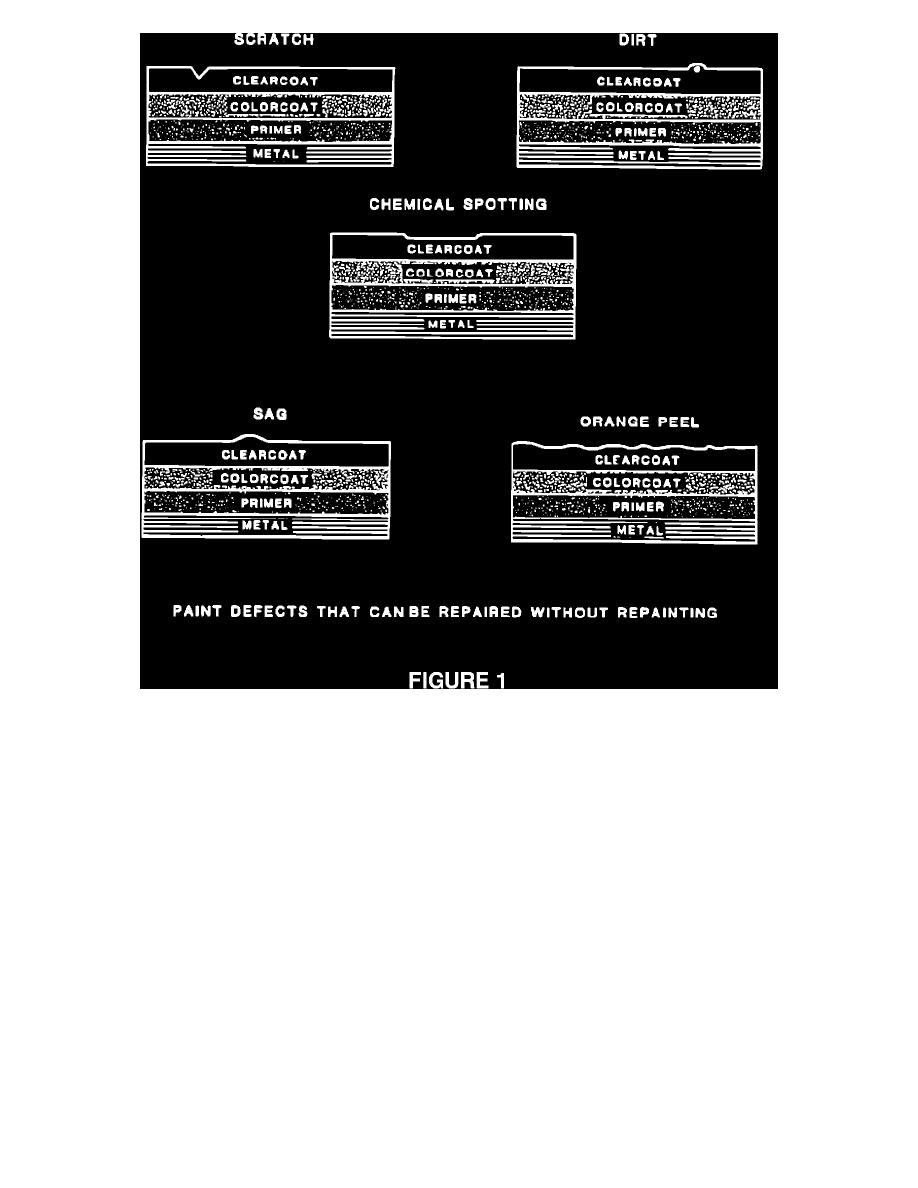Astro Van M L4-151 2.5L (1985)

FIGURE 1
Many minor paint imperfections such as scratches, dirt, chemical spotting, sags and orange peel can be repaired without repainting (see Figure 1.) If an
imperfection can be sanded out before reaching the colorcoat on vehicles having a clearcoat, there is no need to repaint.
The basic repair procedure involves sanding, compounding and polishing. The possibility of scratches in the finished repair can be avoided by sanding
with a 1200 to 1500 micro fine paper such as 3M 02022, 02023 or equivalent and using a medium to fine compound.
Notice:
European "P 1200" is much coarser and, therefore, not equivalent to US 1200.
In many instances repairs can be made by compounding and polishing, and should be attempted prior to any sanding.
Compounding and Polishing
1.
Thoroughly wash repair area with a mild detergent.
2.
Apply a small amount of medium to fine machine rubbing compound to repair area and smear evenly with compounding pad.
3.
With polisher running at approximately 2700 RPM, compound repair area. Keep pad flat against panel while applying light pressure. Feature lines
and panel edges should be hand rubbed to avoid burn-through. Check repair area frequently and, if necessary, add more compound.
4.
If sanding is required, proceed to step 6 if not, apply polish to repair area and evenly smear with polishing pad.
5.
Keep pad flat to panel and allow weight of polisher to do the work. Use polish sparingly to achieve original shine. Machine or hand polish repair
area first, then blend in with rest of panel.
Sanding
